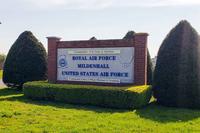DoD finally released its annual report to Congress on the little that’s known about the Chinese military today and like previous reports its largely an exercise in bean counting. It points to the “limited transparency” and “many uncertainties” regarding China’s military modernization and acknowledges that due to a paucity of sources, studying China’s military strategy is an “inexact science.” Since the report is mandated by Congress, its authors go ahead and “make some generalizations.”
With those significant caveats in mind, I’m going to make some quick generalizations of my own about the report, titled "Military and Security Developments in the People's Republic of China," and provide additional analysis as I get a chance to read it more thoroughly as there's a lot to digest.
First off, what is China’s military/security strategy? “China’s current strategy remains one of managing the external environment to ensure conditions are conducive to its own economic development,” the report says. There are internal debates, particularly in Chinese academic circles, on the best way to go about that, the report says. Some argue for a play it cool approach while others urge Chinese policymakers to be more aggressive on the world stage.
What is certain: China’s voracious raw material consumption is forcing the country to focus on securing its sea-lines of communication--up to 40% of crude oil destined for China transits the Straits of Hormuz and 80% transited the Straits of Malacca. While one eye focuses on the SLOCs, the other remains fixed on Taiwan, the PLA’s primary mission, the report says; although there is the occasional glance at U.S. carrier battle groups steaming around WestPac.
The report’s authors put Chinese military spending at $150 billion in 2009; in percentage terms, increases in Chinese military spending have closely tracked China’s GDP growth. Unlike the Cold War era Soviet Union, China is not bankrupting itself through huge defense expenditures.
The report points up China’s lack of operational experience, “the PLA remains untested in modern combat.” That absence of combat experience may explain some of the lack of sophistication in China’s doctrine and strategy vice what was seen in Soviet military doctrine during Cold War days (the Soviets had a very rich and innovative doctrinal heritage upon which to draw).
“China’s civilian leaders must rely upon the advice of commanders lacking direct experience in modern combat or upon “scientific” combat models divorced from the realities of the modern battlefield… Despite significant improvements, the PLA continues to face deficiencies in inter-service cooperation and actual experience in joint exercises and combat operations. Recognizing these shortcomings, China’s leaders continue to stress asymmetric strategies to leverage China’s advantages while exploiting the perceived vulnerabilities of potential opponents.”
Chinese military doctrine and strategy is still heavy influenced by 1991’s Desert Storm, the report says, which implies that the revolution in military affairs (RMA) line of thinking is a major driver. That certainly jibes with the PLA’s heavy investment in long-range precision strike. China is amassing a formidable guided missile arsenal with much of it aimed at Taiwan, although Beijing is looking beyond that scenario as it builds out its military.
-- Greg Grant









